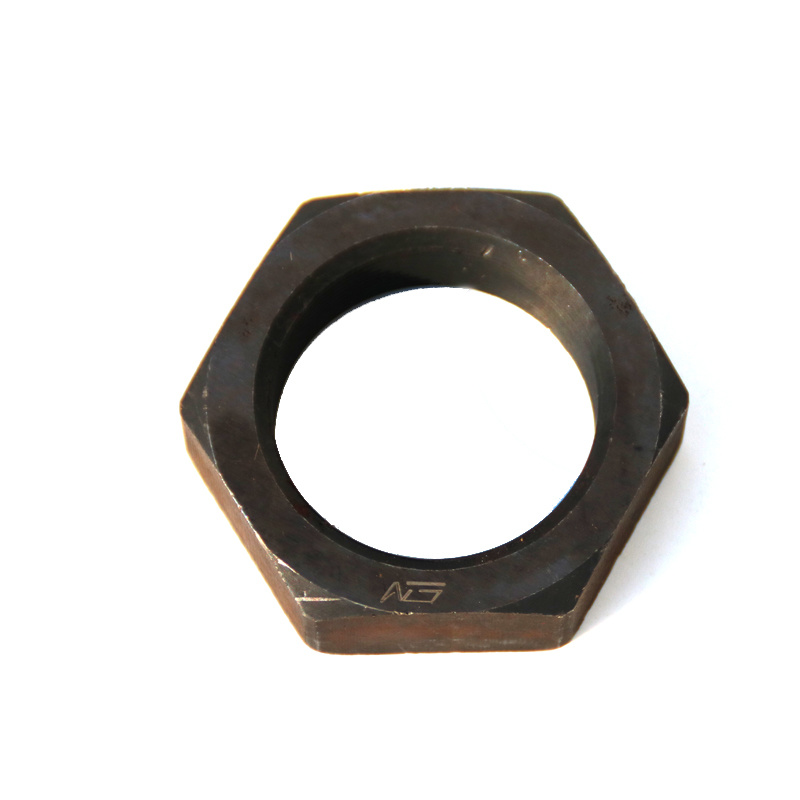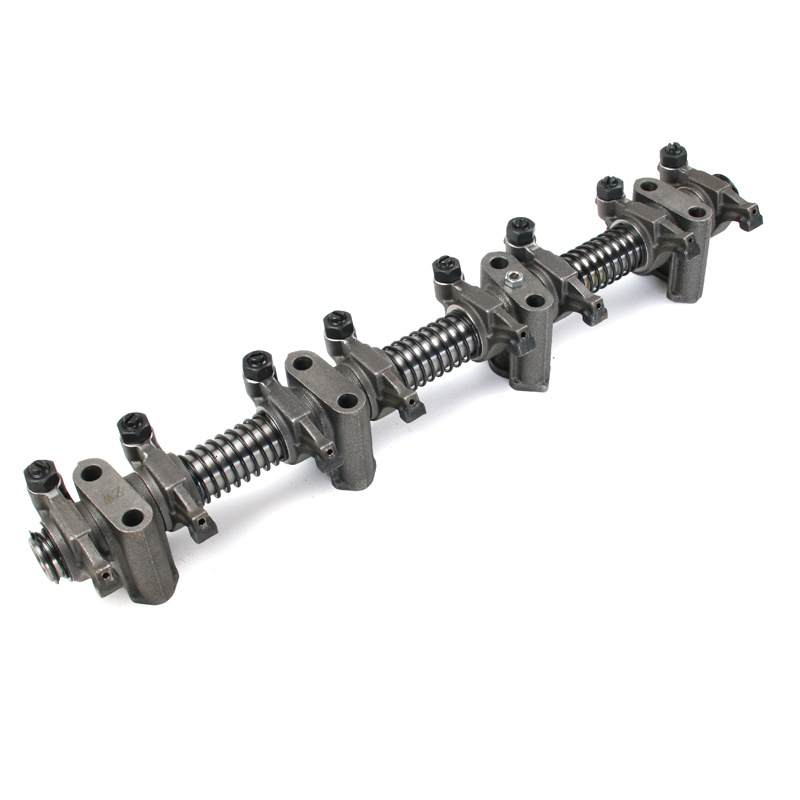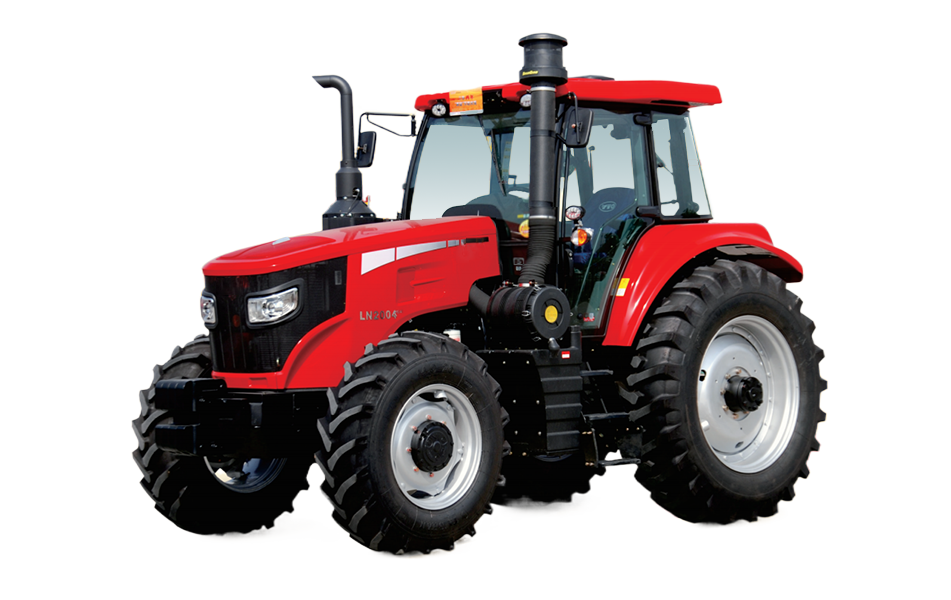Unlocking Performance: Essential Parts for the Best Tractor Chassis
Release time:
2025-04-02
Unlocking Performance: Essential Parts for the Best Tractor Chassis
Table of Contents
- Introduction to Tractor Chassis Performance
- The Importance of a Robust Tractor Chassis
- Essential Parts for Optimal Tractor Chassis
- 1. Frame: The Backbone of Your Tractor
- 2. Suspension System: Ensuring Stability
- 3. Steering Mechanism: Precision Control
- 4. Engine Mounts: Vibrational Stability
- 5. Axles: Power Transfer Foundations
- 6. Brake System: Safety and Control
- 7. Wheels and Tires: Traction and Performance
- Best Practices for Maintaining Your Tractor Chassis
- Upgrading Your Tractor Chassis: When and Why
- Conclusion: Maximizing Your Tractor’s Potential
- Frequently Asked Questions
Introduction to Tractor Chassis Performance
In the world of agriculture, **the efficiency of machinery** can significantly impact productivity. Among the various components of agricultural equipment, the **tractor chassis** stands as a vital foundation that connects functionality and performance. Understanding what makes up a high-performing tractor chassis is crucial for anyone invested in agricultural machinery. This article will explore the essential parts of a tractor chassis, how they contribute to overall performance, and best practices for maintenance and upgrades.
The Importance of a Robust Tractor Chassis
A robust tractor chassis serves multiple purposes. It provides the structural integrity needed to support various components, including the engine, transmission, and implements. The chassis also plays a vital role in **weight distribution**, stability, and overall maneuverability. A well-designed chassis allows for better traction and power transfer, ultimately resulting in increased productivity on the farm.
Moreover, a durable chassis can withstand harsh environmental conditions, making it a long-term investment. By ensuring that your tractor's chassis is built with quality materials and parts, you reduce maintenance costs and enhance operational efficiency.
Essential Parts for Optimal Tractor Chassis
To unlock the full performance of your tractor chassis, understanding its essential components is imperative. Here, we delve into the critical parts that contribute to the functionality and efficiency of your agricultural machinery.
1. Frame: The Backbone of Your Tractor
The **frame** is the primary structure of the tractor chassis, designed to support various systems, including the engine, wheels, and seats. A high-quality frame is made from robust materials such as steel or aluminum to endure the stresses of farming operations.
A well-engineered frame can minimize flex and distortion while providing a stable platform for other components. This structural integrity is vital for maintaining alignment and performance over time.
2. Suspension System: Ensuring Stability
The **suspension system** is critical for maintaining stability and comfort while operating the tractor. It absorbs shocks from uneven terrain, ensuring that the operator experiences minimal jarring.
A superior suspension system enhances traction, allowing the tractor to maintain contact with the ground, which is crucial for effective power transfer. Various types of suspension systems, such as independent or solid axle designs, offer different advantages based on the intended use of the tractor.
3. Steering Mechanism: Precision Control
A precise **steering mechanism** is essential for maneuvering the tractor effectively. Various types of steering systems exist, including **rack-and-pinion** and **worm gear** systems, each with unique attributes.
An accurate steering system allows for quick adjustments, making it easier to navigate tight spaces or change direction efficiently. The responsiveness of the steering can significantly influence overall operational effectiveness, particularly in intricate farming tasks.
4. Engine Mounts: Vibrational Stability
**Engine mounts** are crucial for securing the engine to the chassis while minimizing vibration transfer to the operator. Poorly designed mounts can lead to excessive vibrations, impacting control and comfort.
High-quality engine mounts, often made from rubber or polyurethane, can absorb shocks and vibrations effectively, ensuring a smoother operation. This stability is essential for prolonging the lifespan of the engine and other components attached to the chassis.
5. Axles: Power Transfer Foundations
**Axles** play a critical role in transferring power from the engine to the wheels. They must be robust enough to handle the forces exerted during operation, particularly when pulling heavy loads.
Proper axle alignment is crucial for effective power delivery and can prevent excessive wear on tires. Choosing the right axle configuration, whether it be **live axles** or **dead axles**, depends on the specific requirements of your farming operations.
6. Brake System: Safety and Control
The **brake system** is a vital safety feature of any tractor chassis. Effective braking systems allow for controlled stopping, which is essential when navigating through various terrains.
Modern tractors often utilize hydraulic brakes, which provide enhanced stopping power compared to traditional mechanical systems. Regular maintenance of the brake components is crucial to ensure safety and reliability in field operations.
7. Wheels and Tires: Traction and Performance
The **wheels and tires** directly impact the tractor's ability to operate on different surfaces. Ensuring that the right tire type is used for specific tasks—such as agricultural, industrial, or turf tires—can greatly affect traction and performance.
Tire pressure also plays a pivotal role in how well a tractor functions. Keeping tires properly inflated ensures optimal contact with the ground, improving stability and preventing excessive wear.
Best Practices for Maintaining Your Tractor Chassis
Regular maintenance of your tractor chassis is essential to ensure longevity and performance. Here are some best practices to follow:
1. **Routine Inspections**: Conduct regular inspections of all chassis components to identify wear and tear early.
2. **Lubrication**: Keep moving parts well-lubricated to reduce friction and wear.
3. **Check Alignment**: Ensure that all components, particularly axles and wheels, are properly aligned to avoid uneven wear.
4. **Tire Maintenance**: Regularly check tire pressure and tread depth for optimal performance and safety.
5. **Brake Checks**: Regularly inspect brakes for wear and functionality to maintain safety standards.
By adhering to these best practices, you can ensure that your tractor chassis operates at peak performance and serves you effectively over the long term.
Upgrading Your Tractor Chassis: When and Why
Upgrading your tractor chassis may be necessary if you experience performance issues or if your farming operations require additional functionality. Some signs that an upgrade may be necessary include:
- Frequent mechanical failures or repairs
- Insufficient power transfer during operations
- Poor stability or handling
Investing in high-quality parts can enhance performance and extend the lifespan of your tractor chassis. Consider upgrades such as improved suspension systems, advanced steering mechanisms, and performance tires to unlock the full potential of your machinery.
Conclusion: Maximizing Your Tractor’s Potential
Understanding the essential parts of your tractor chassis and their roles can significantly influence your agricultural productivity. By focusing on quality and maintenance, you can ensure that your tractor operates efficiently and effectively in various conditions. Investing in the right components and regularly maintaining them will not only elevate performance but also contribute to the longevity of your farming equipment.
Frequently Asked Questions
1. What is the most critical part of a tractor chassis?
The frame is often considered the most critical part, as it provides the structural integrity necessary to support all other components.
2. How often should I perform maintenance on my tractor chassis?
Regular inspections should be conducted at least every few months, with more frequent checks during peak operating seasons.
3. What are the signs of a failing suspension system?
Common signs include excessive bouncing, poor handling, and uneven tire wear.
4. Can I upgrade my tractor chassis components myself?
While some upgrades can be conducted as DIY projects, it's advisable to consult professionals for complex parts to ensure safety and proper installation.
5. What type of tires are best for my tractor?
The best type of tires depends on your specific farming needs, including terrain and intended use. Agricultural tires are preferred for farm operations, while turf tires are better for landscaping.
By following this guide, you are equipped with the knowledge to optimize your tractor chassis for enhanced performance, ultimately leading to increased productivity and efficiency on your farm.









